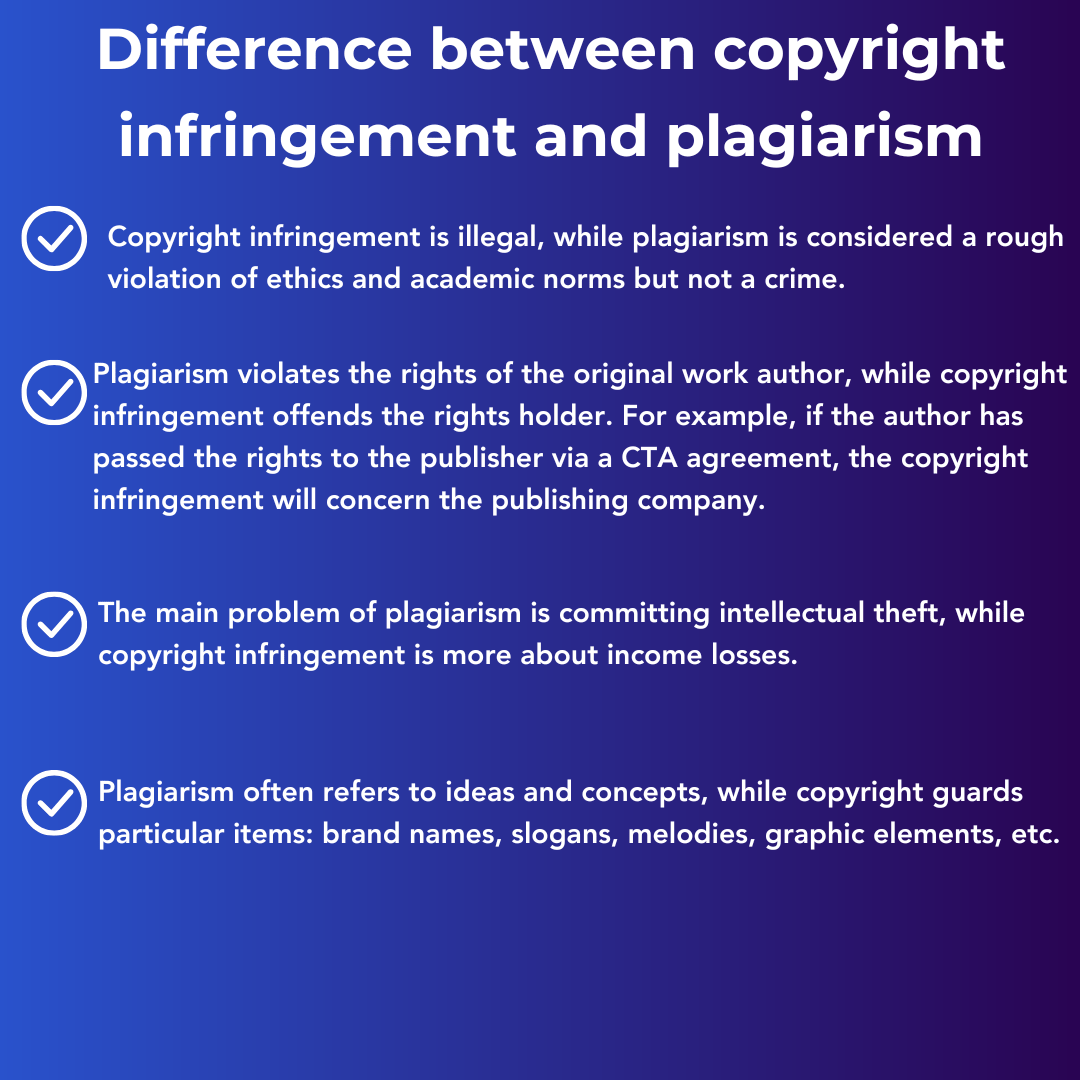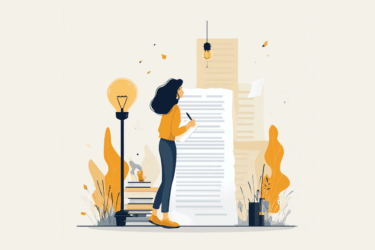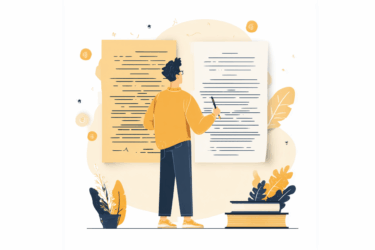The definition of copyright infringement
The term copyright infringement means inappropriate use of one’s registered intellectual property without the permission of the right owner. The most widespread kinds of copyright infringement are piracy and plagiarism. In the case of piracy, the person or organization credits the authorship, yet the right owner does not benefit from it. The important point is that intellectual property must be protected by copyrights. In this example, a pirate that distributes music, films, or books makes the original author lose his or her profit from the copyrighted items. Moreover, if one pays for content, such as purchasing a movie or subscribing to content streaming, it is illegal to distribute it for profit. Thus, when one organizes an event, such as the screening of a film, and charges guests for it, it is also a copyright infringement. That person makes a profit off of others’ intellectual property.
The definition of plagiarism
Plagiarism is a type of copyright infringement, in which a person presents the original ideas of another person as one’s own or fails to reference the author. The most widespread and also detectable cases of plagiarism occur in writing. However, it plagiarism not limited to it, as copying also concerns ideas, music, visual design, and even dance moves. For example, a sequence from Satoshi Kon’s cult anime movie Perfect Blue inspired Darren Aronofsky so much that he bought the rights to the whole film to mimic it in his 2000 picture Requiem for a Dream. If Aronofsky shot the scene without the permission, he would have been sued for plagiarism, as the similarity was evident.
Copyright VS. Plagiarism

There are different ways in which an original work can be plagiarized. The most common are quoting the author without referencing them, paraphrasing original ideas and presenting them as one’s own, patchwriting, and referencing an author that does not exist. Moreover, copyright infringement and plagiarism are different in terms of the victims of the violation. Copyright infringement usually has only one victim: namely, the right owner who does not receive credit or profit for their work. Plagiarism may have two victims or sets of victims: the original author of the intellectual property and the people deceived into thinking the plagiarized work is original.






